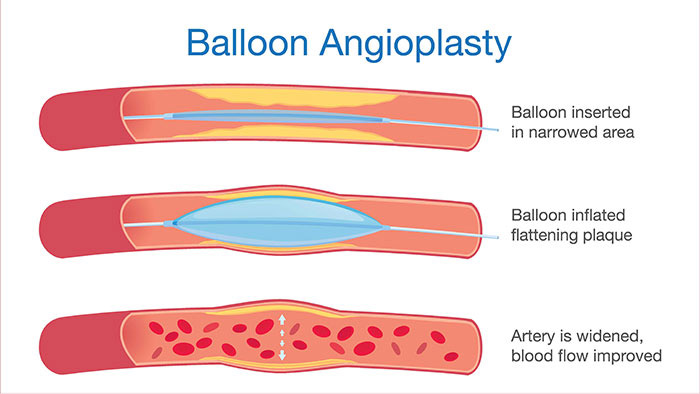
Balloon angioplasty is done in the catheterization laboratory (“cath lab”). The doctor injects a special dye through a small, thin tube called a catheter into your bloodstream. The dye allows the doctor to view your arteries on an X-ray monitor. A device with a small balloon catheter on its tip is then inserted through an artery in your leg or arm and threaded through the arteries until it reaches the narrowed area. The balloon is inflated to flatten the plaque against the wall of the artery, opening the artery and restoring blood flow. Then the balloon is deflated and removed from your body.
Benefits:
The narrowing in the artery may be reduced, resulting in improved blood flow.
Major complications are uncommon.
You may be able to return to normal activities shortly after the procedure.
The procedure is usually performed using local anesthesia, which involves fewer risks than general anesthesia (“putting you under”).
Risks:
The insertion site may bleed or become infected.
The artery may become blocked again (restenosis).
The artery may tear (artery dissection).
The artery may develop a hole (artery perforation).
